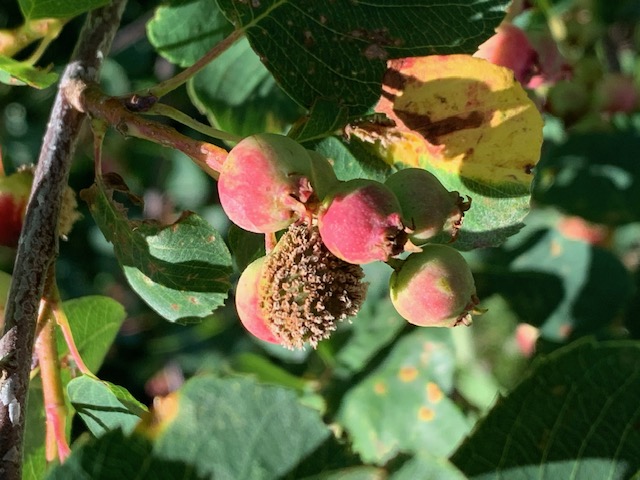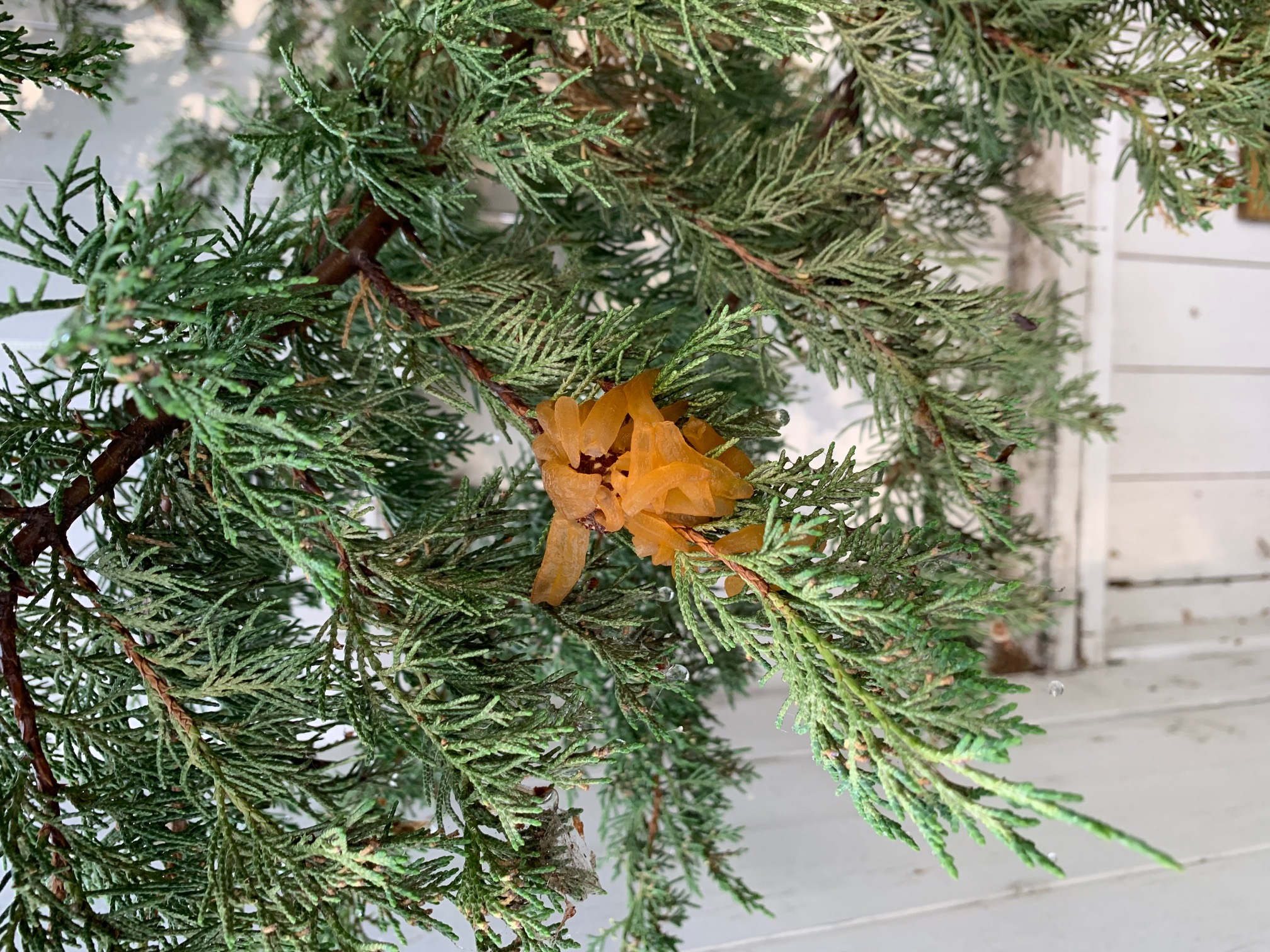
Cedar/Apple rust, Saskatoon/Juniper rust
Gymnosporangium juniperi-virginianae, Gymnosporangium nelsonii

Cedar-apple rust and saskatoon-juniper rust are similar complex fungal diseases that need two different host plants. A plant from the Cupressaceae family such as cedar or juniper and a plant from the Rosacea family such as apple, hawthorn or Saskatoon are needed for the fungus to complete its life cycle.
Symptoms and disease life cycle:
- Galls on the stems of cedar or juniper shrubs are the source of this disease. The galls are small, round, hard brown growths when dormant and are found on the stems.
- When the galls become rain soaked, they swell, producing jelly-like tendrils (telial horns which produce spores) that project out of the galls (kind of like an alien creature) as seen in the photo. When the horns dry, spores are released and carried by breezes to young leaves of susceptible fruit trees which are the alternate host. Spores can travel several kilometers but most infections develop within a few hundred meters.
- The infection on the alternate host appear as small orange or yellow 'rust' spots on the upper leaves of apple and hawthorn and on the underside of the leaves of saskatoons.
- Fruits may also develop spots later in the season. In apples these are tiny little dots and are usually not very noticeable. In saskatoon berries, the orangey spots may develop tiny spiny projections that produce spores. Although the berries are unsightly, they can still be used to make juice or jelly.
- In July the rusty spots on leaves and fruit release spores which spread with the wind and rain back to the original host plant and the cycle continues.
Control:
- Prune out any round brown galls and/or swollen telial horns found on cedar or juniper. It's easier to scout for these in fall or early spring.
- Grow saskatoon shrubs well away from junipers if possible.

